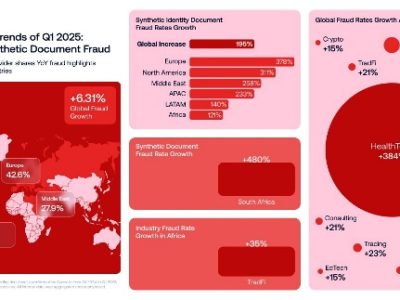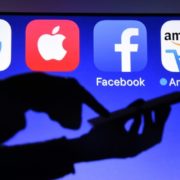By SEGUN ORUAME
Not too long ago, MTN and Western Union inked an alliance to ignite the biggest international mobile remittance services or mobile money transfer on the African continent. The alliance is as significant for the financial/banking industry as it is for the telecom sector in what would strengthen the argument for convergence and the erasing of traditional technology with regulatory boundaries.
The alliance also widens the vista for knowledge on the implication of the rise and rise of mega-telcos. MTN with its home office or headquarters in South Africa is a Middle East and African operator making it a mega telco with subscribers in about 21 countries. This is significant if you begin to see subscribers of mega-telcos as citizens of the new universal or globalised countries.
Virtually all the networks in the big league of Nigeria’s mobile phone market including Airtel, Etisalat, Globacom and MTN have a combined subscribers’ base in excess of 110 million. Apart from Globacom which presence is still chiefly African; all the other three have operations within and outside the continent.
But it is the convergence part of the MTN/Western Union alliance and its exciting possibilities that is important here from a technology perspective. What MTN and Western Union have demonstrated is that banking or money transfer no longer need be within the confine of banking halls or within the exclusive ambit of what is traditionally financial/banking houses.
That same gambit is already playing out itself in the new competitive frontier of mobile money where banks, technology solutions companies and telcos fully armed with mobile money licences from the Central Bank of Nigeria (CBN), the country’s financial regulator, are inking partnerships to taking services to millions of peoples via their mobile phones.
Licensed mobile money operators including Paga are already becoming a major feature of financial transactions in Nigeria where new regulatory policy is pushing for a cashless economy. After a successful test-run in Lagos of its cashless policy, the countries apex bank and regulator, Central Bank of Nigeria has widen the cashless policy scope to more states in a gradual but steady shift at ensuring 90% of transactions occur via technology windows including web and mobile pipes. Paga, launched in 2011, has over 500, 000 users and has done over USD105 million in total value transactions. Not much for a market of 115 million mobile phone users, it only shows the potential of an untapped market.
Convergence is making telcos to be financial houses and with the numbers of subscribers pulsating on their networks, they may become the new hub of financial activities.
That has dire implication. When telcos become financial hubs, banks will have to reinvent themselves. Regulation will do little to stop the trend. It may slow down deployment and uptake. But because it is a technology thing, ultimately regulation will collapse in the face of technology reality and people will go for services that serve them best. As for network operators, they will, of necessity, build and mobile money subscribers will come. In Nigeria, operators are not allowed by law to solely provide mobile services. They are to operate in partnership with other licensed operators.
That scenario is already afield. MTN, Airtel and Globacom have inked partnerships with banks to deliver mobile money services in a way that should see more banking transactions originating and terminating within the window of mobile phones. The trend should bring in outstanding rewards for the CBN’s goals of a ‘cashlite Nigeria’ with little cash in circulation for transactions and the extension of more greater level of banking services to more Nigerians – the unbanked population.
Nigeria’s untapped mobile money market is valued at some $25 billion and should become the continent’s biggest mobile money market in its full steam. The factors expected to push growth include the wide unmet gaps for banking and the convenience that mobile money transfer technology brings to users in a form of branchless banking. They are the same reasons why the innovative M-Pesa became so popular in Kenya and recorded outstanding success beyond the expectation of Safaricom and regulatory authorities who didn’t see it coming. M-Pesa was first introduced in March 2007. By mid quarter of 2010, the application had over ‘2.3 million registered users with over 18 Billion (about $ 230 million) Kenyan Shilling (Ksh) moved through the system, via person-to-person transfers.’ Now all over east Africa, mobile money is pushing aside traditional banking and other transaction modes.
Why mobile money will grow
Olga Morawczynski, a doctoral candidate at the University of Edinburgh, who spent over nine months investigating customer adoption and usage in both urban and rural Kenya, made these conclusions on why M-Pesa has become so popular: “Firstly, it is the young, male, urban migrants who are driving the uptake of services – customer adoption. These migrants are what innovation researchers call ‘early adopters’ of a technology. They are usually better educated and earn higher incomes than those in the village. Because these migrants are the senders, they can choose the channel for money transfer. They then influence recipients in the rural area—who are usually female, less educated and poorer—to also use M-PESA. This segment is referred to as the ‘technology laggards’. They are usually the last, and often the least likely, to adopt an innovation.”
The window regulators must explore is how to guide the eventual alliance between traditional financial houses and increasingly dynamic telecom networks. Telephone companies are increasingly going beyond mere providers of phone services. The convergence of technology and rising sophistication of the marketplace is making it mandatory for dissimilar service providers to form a synergy to drive converged services. They have no choice. Telcos have learnt to build synergy with content providers within the broadcast realm to provide news and entertainment content. This is only one of several possibilities forcing alliances on diverse market players. Regulators must encourage such alliances to sustain the relevance of the different segment players otherwise nothing stops a mega-telco from becoming a mega-multi services provider offering all services in one converged pipe. As the experience in Kenya has shown with the successful deployment of M-Pesa by Safaricom, regulators within the financial and telecom sector must be alert to the implications of the adaptation of new technologies.
This interesting illustration from Wikipedia, the free encyclopedia, will prove the point:
“M-Pesa (M for mobile, pesa is Swahili for money) is the product name of a mobile-phone based money transfer service whose initial concept and design was Kenyan and was later developed by Sagentia (later transferring to IBM in September 2009) for Vodafone. The development was initially sponsored by the UK-based Department for International Development (DFID) in 2003–2007. “The initial concept of M-Pesa was to create a service which allowed microfinance borrowers to conveniently receive and repay loans using the network of Safaricom airtime resellers. This would enable microfinance institutions (MFIs) to offer more competitive loan rates to their users, as there is a reduced cost of dealing in cash. The users of the service would gain through being able to track their finances more easily. But when the service was trialed, customers adopted the service for a variety of alternative uses; complications arose with Faulu, the partnering microfinance institution (MFI). M-PESA was re-focused and launched with a different value proposition: sending remittances home across the country and making payments.
“M-Pesa is a branchless banking service, meaning that it is designed to enable users to complete basic banking transactions without the need to visit a bank branch. The continuing success of M-PESA, in Kenya, has been due to the creation of a highly popular, affordable payment service with only limited involvement of a bank. The system was developed and ran by Sagentia from initial development to the six million customer mark. The service has now been transitioned to be operationally run by IBM Global Services on behalf of Vodafone; the initial three markets (Kenya, Tanzania and Afghanistan) are hosted by Rackspace. “M-Pesa customers can deposit and withdraw money from a network of agents that includes airtime resellers and retail outlets acting as banking agents. M-Pesa is operated by Safaricom, a Mobile network operator (MNO), which is not classed as a deposit-taking institution (such as a bank). Therefore, M-Pesa may not be advertised as a banking service.”
By World Bank’s estimate, Nigeria receives over $10 billion in remittances every year while Uganda receives nearly $500 million, making up three percent of the country’s GDP. Both markets are key to MTN operations. In Nigeria alone, MTN has nearly 30 million subscribers meaning that a launch of its MTN MobileMoney service in Nigeria would definitely impact massively on Nigeria’s financial scene. For regulators, there is still no clear-cut approach to addressing the challenge and there is still no defined predictability as to what level of changes could occur with adoption of MobileMoney in a big mobile market such as Nigeria where $10 billion enters the system yearly from overseas.
Regulators and mobile money
In itself, the MTN alliance with Western Union poses a new level of challenge to regulators here. The service allows users to “receive Western Union Money Transfer transactions in their mobile accounts while, MobileMoney users in certain countries will be able to send Western Union Money Transfer transactions directly from their mobile phones for payout at one of Western Union ‘s 386,000 agent locations in 200 countries and territories around the world.”
“An MTN subscriber who receives a Western Union Money Transfer transaction in his MobileMoney account will be able to use the funds to pay bills, top-up airtime, send money domestically and internationally, or withdraw cash at MobileMoney agents or any participating ATM.”
Like M-Pesa, MTN MobileMoney is also a branchless banking service and therefore, subscribers may complete basic banking transactions without the need to visit a bank branch. They can have their sent money by simply getting cash from MTN recharge card resellers who double as MobileMoney agents. Welcome to the new banks and bankers. “MTN’s MobileMoney service is currently available in Benin, Cameroon, Ghana, Guinea Bissau, Ivory Coast, Rwanda, South Africa and Uganda, with pilots underway in several other markets. The service offers consumers a convenient, secure and affordable way to send money within the same country (domestically), buy airtime and make basic utility payments using their MTN mobile phones. MTN offers the service in partnership with local banks.”
In several jurisdictions, phone operators are legally bound to operate mobile money services in partnership with banks. But as convergence evolves, market dynamics is likely to make dependence on banks less strategic. This is where regulators can get involve. They must begin to peep into the future and see the likely consequences of convergence and growth on mobile money transfer. Technology cannot be stopped. Regulation will definitely not stop mobile money banking. It can only provide barriers which will steadily be erased as the market gets more sophisticated.
Banks and the convergence trail in mobile money
What is critical is that banks must wake up to the reality of convergence. Like regulators they must be prepared for change. They must be willing to reinvent themselves outside of the conservative mien of 19th and 20th century banking. Banks must see convergence coming and strive to grab the opportunities. If telcos are foraging into banking, it is because they have seen the future and the future is convergence. And banks must not wait. They have to forage outside their traditional territories and get cracking with the drivers of the new age: the age of information technology and the eternal season of convergence. The good news is that several banks are already licensed to deliver mobile money and in addition, they have inked partnerships with telcos to deliver mobile money services in a way that points to the future of banking in the age of convergence.





























